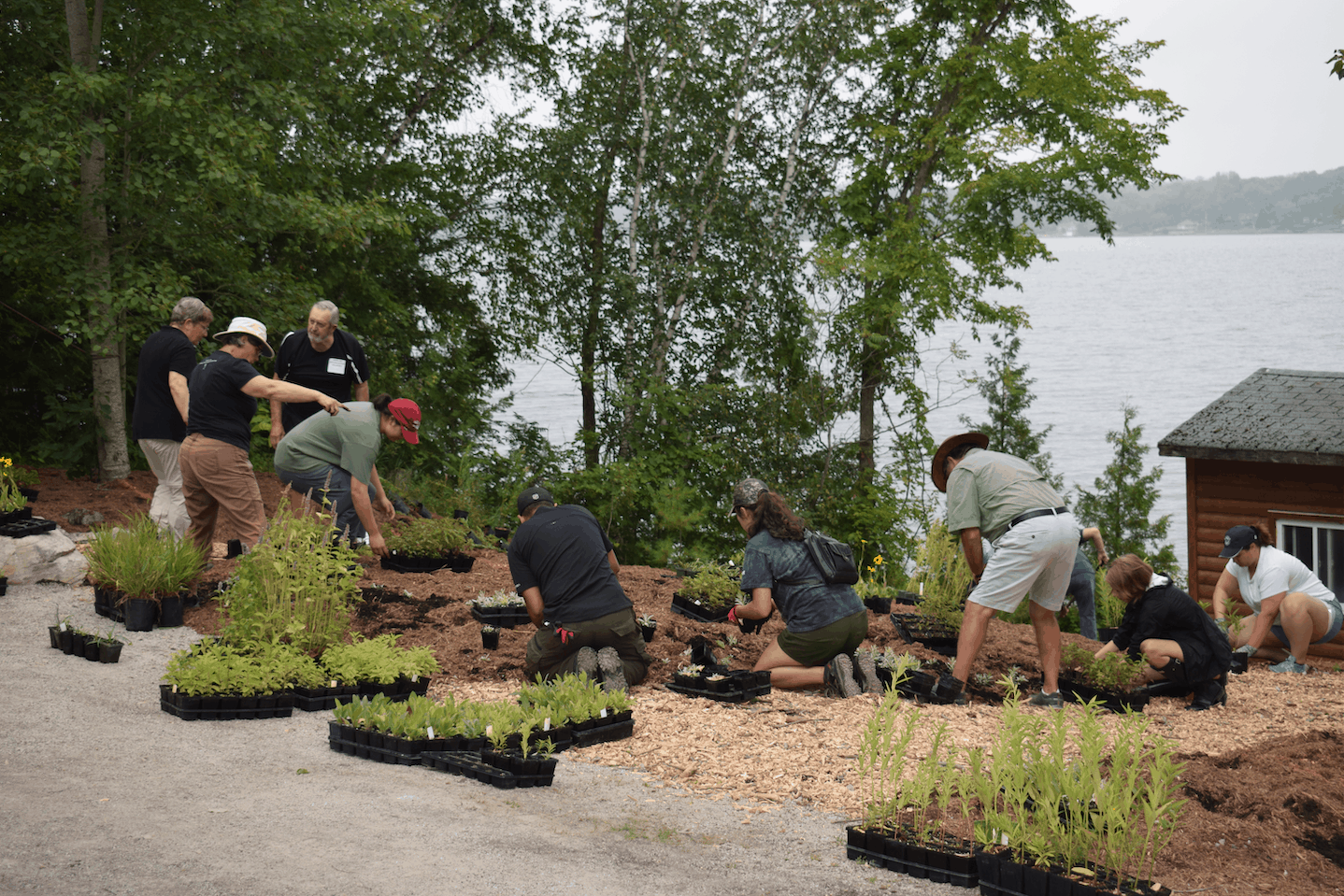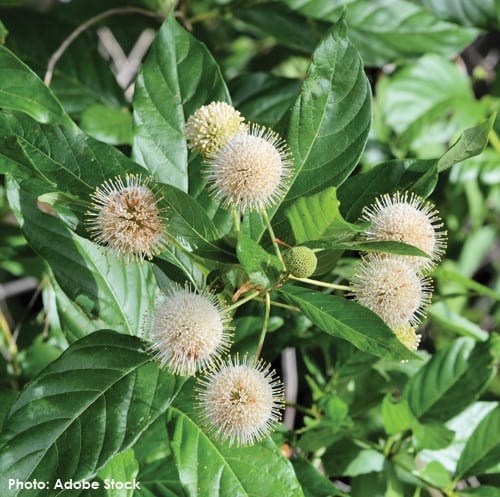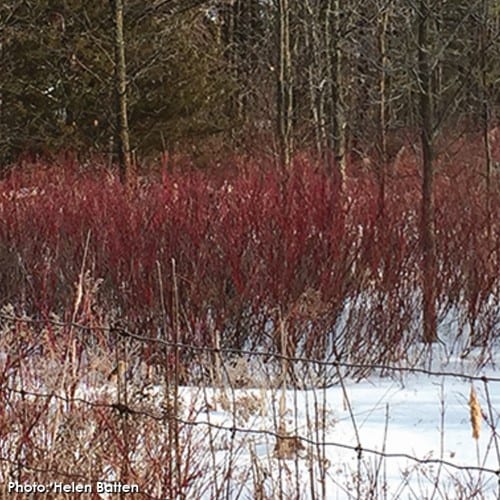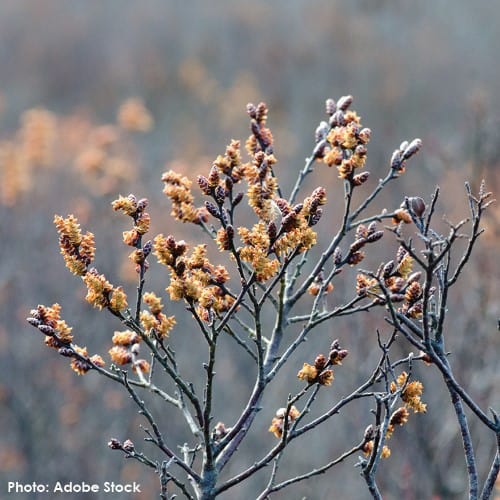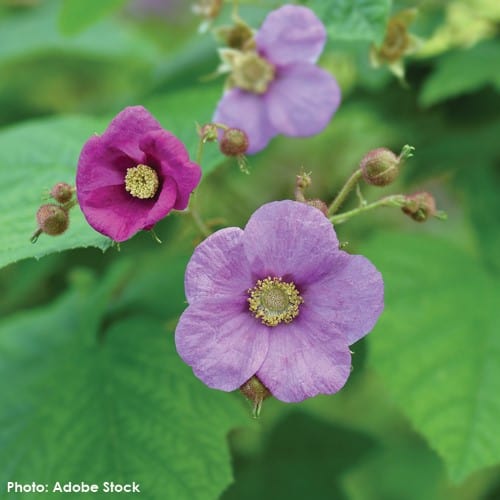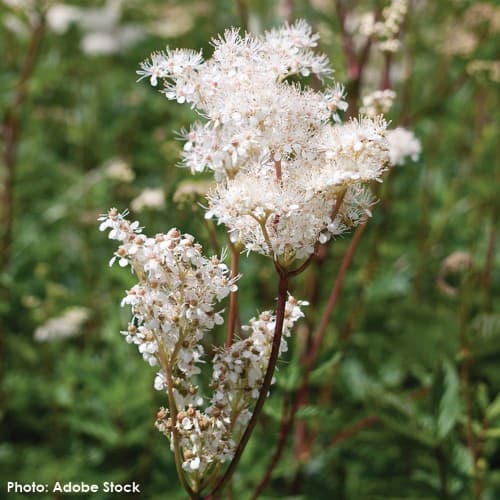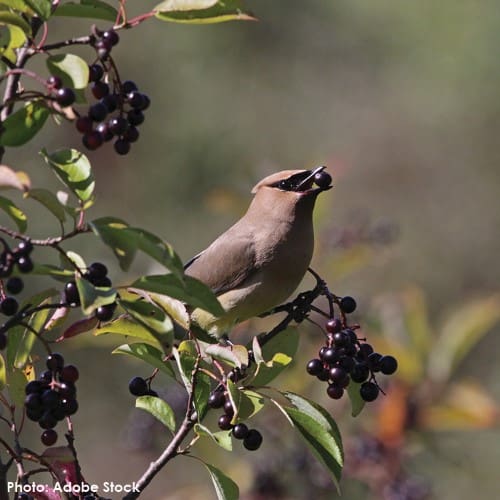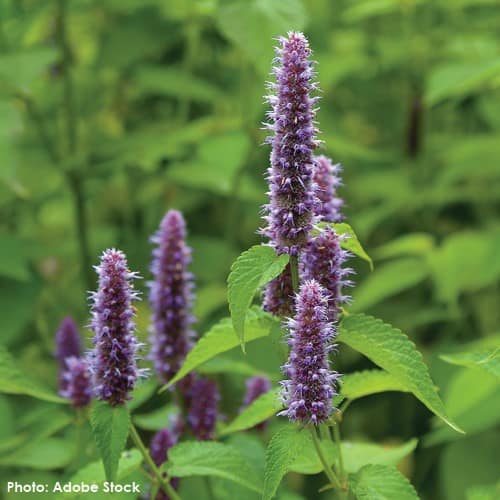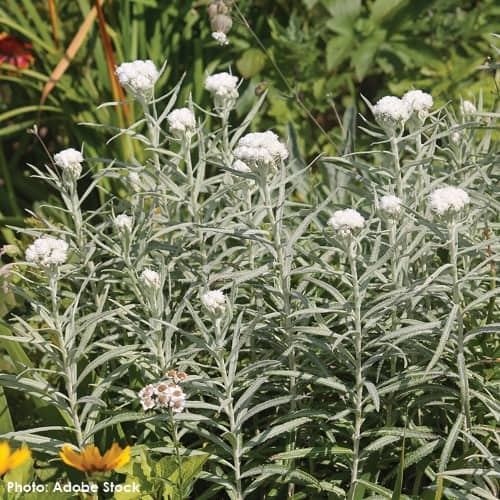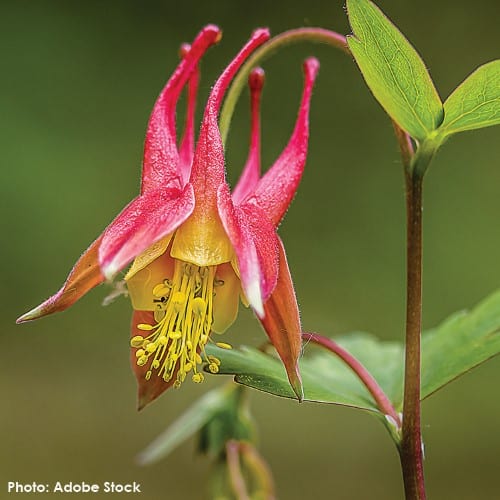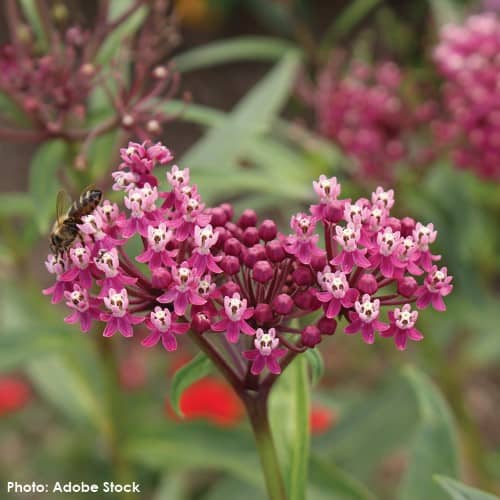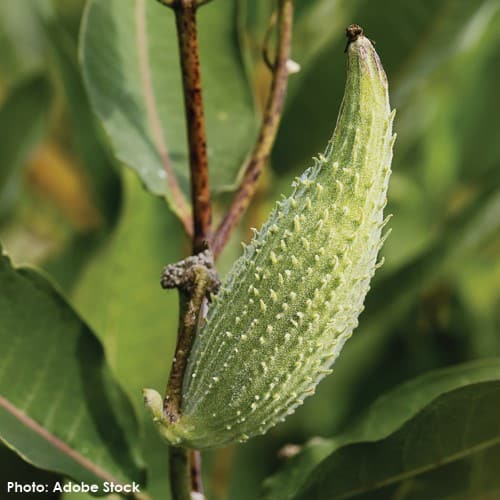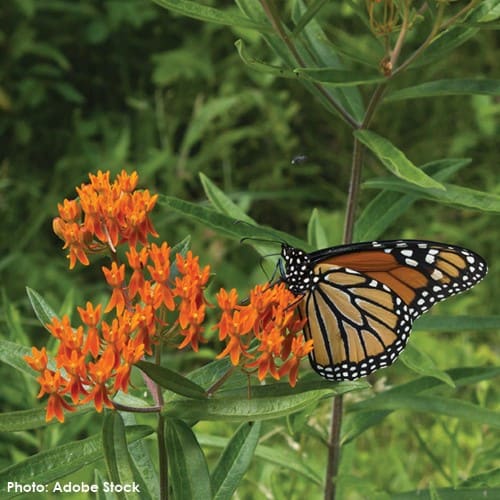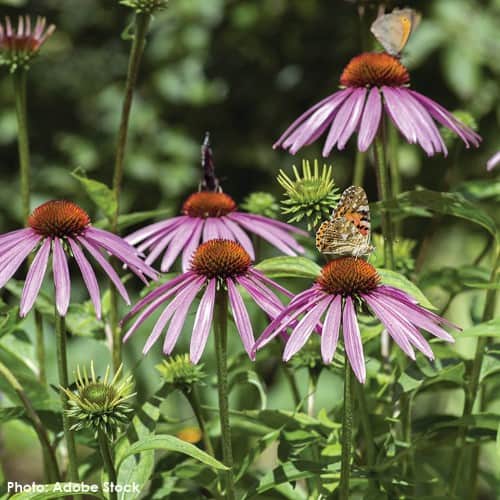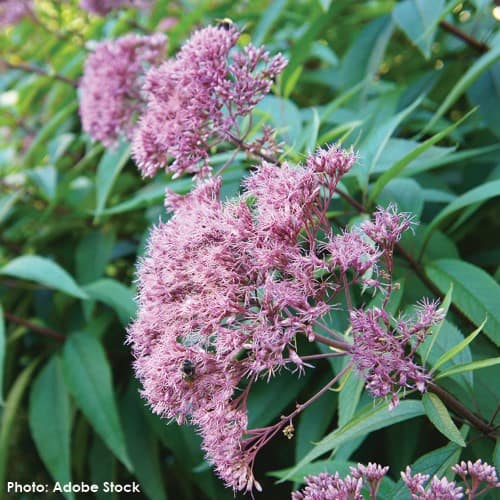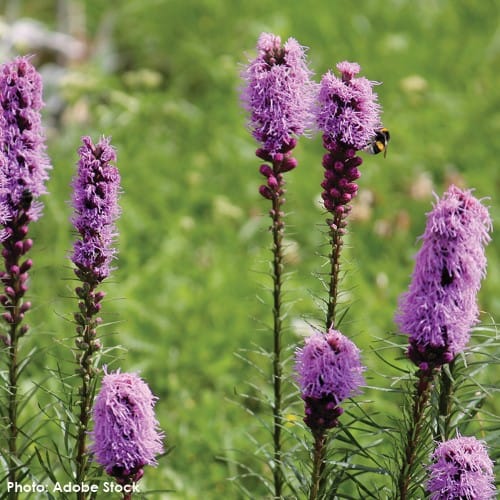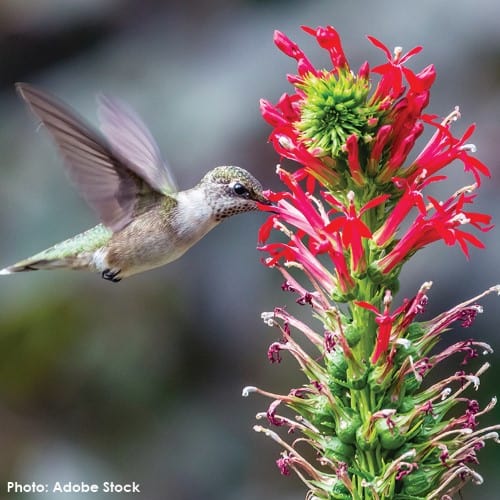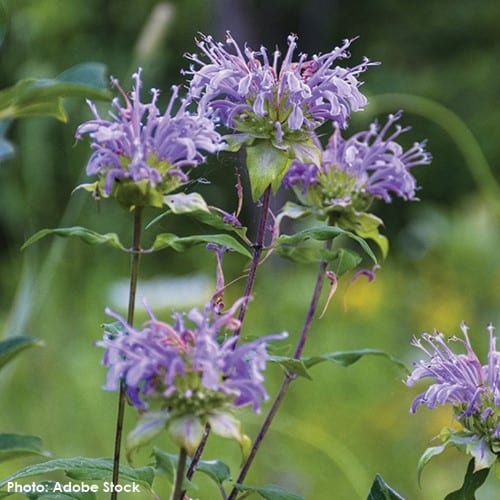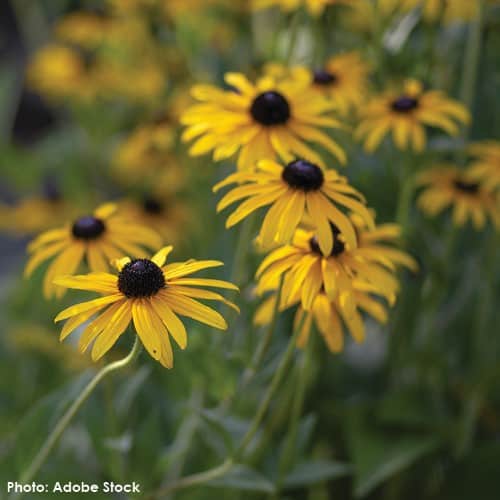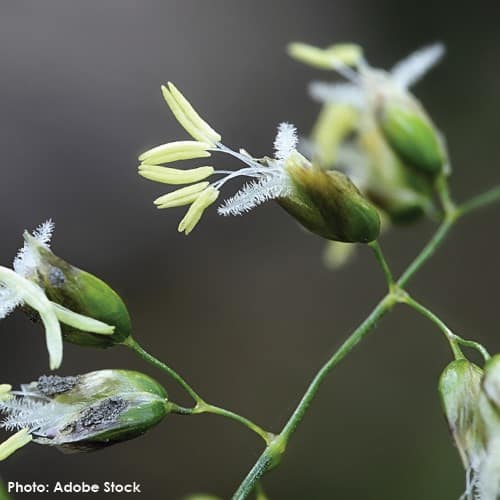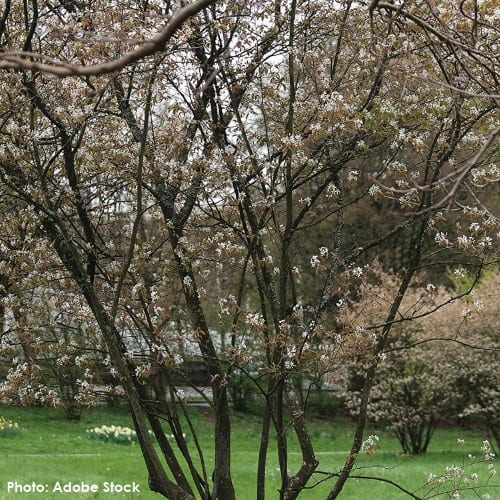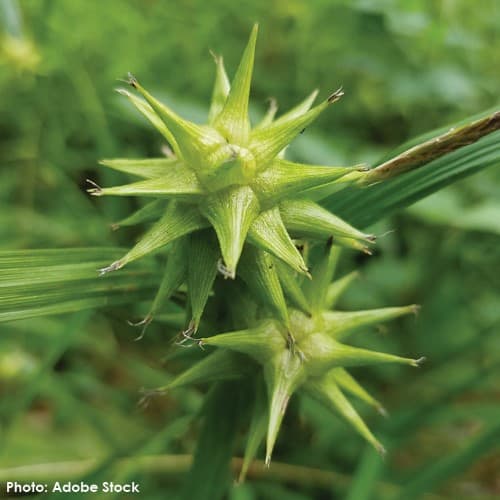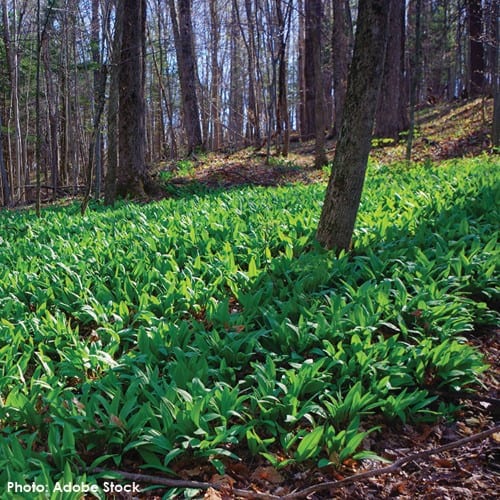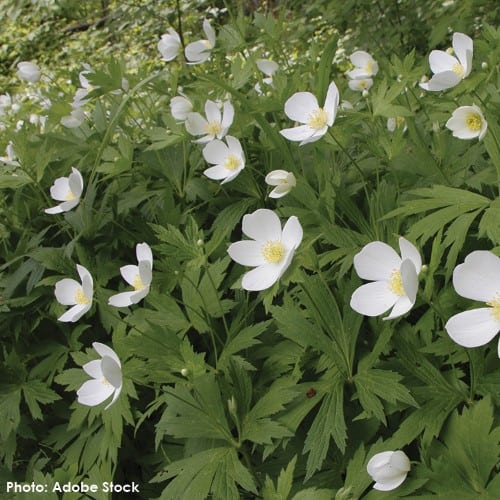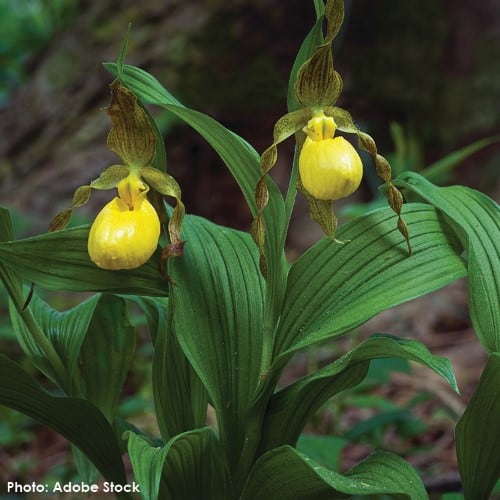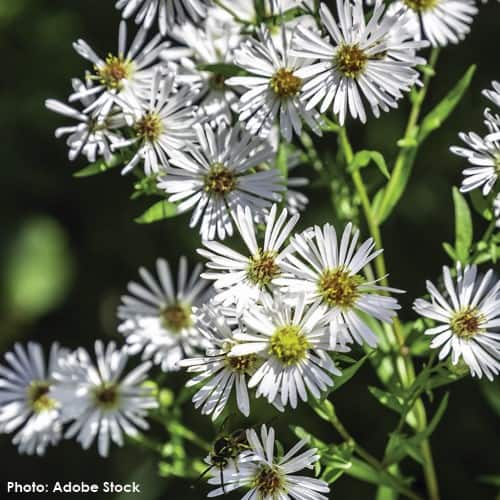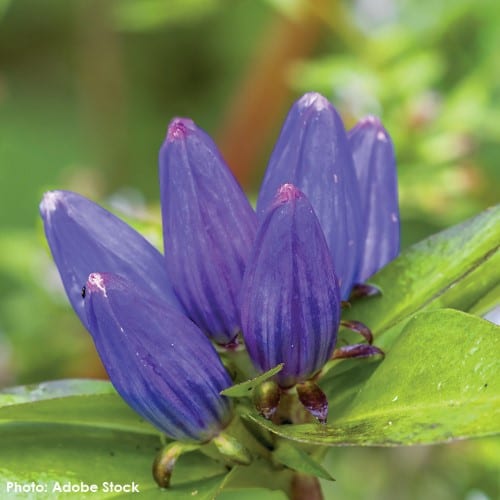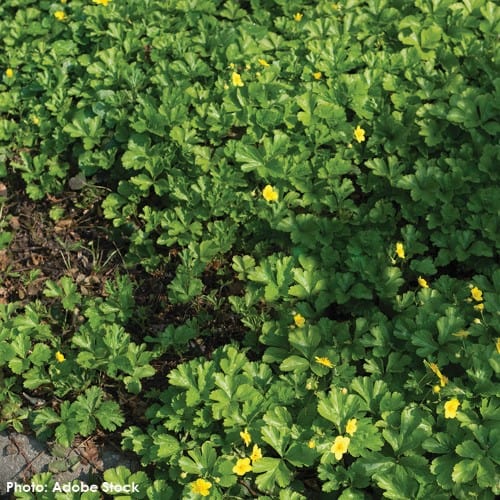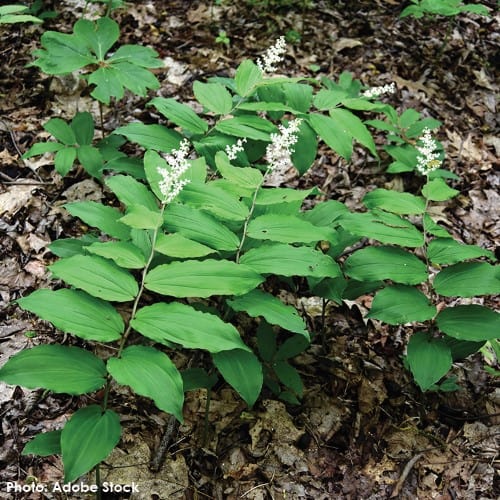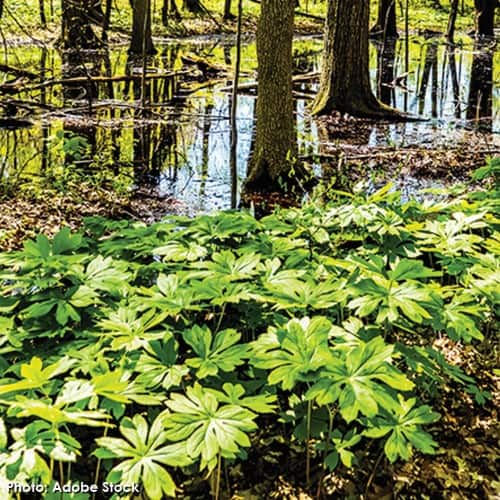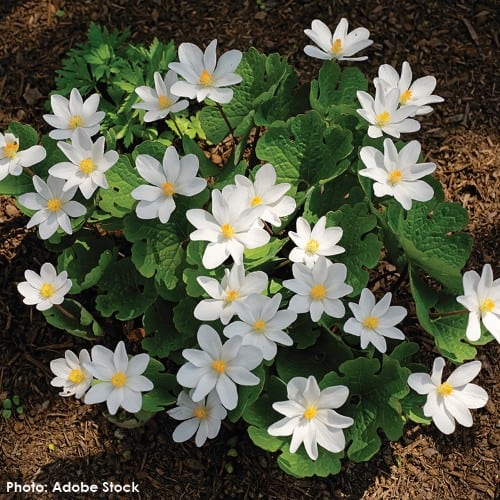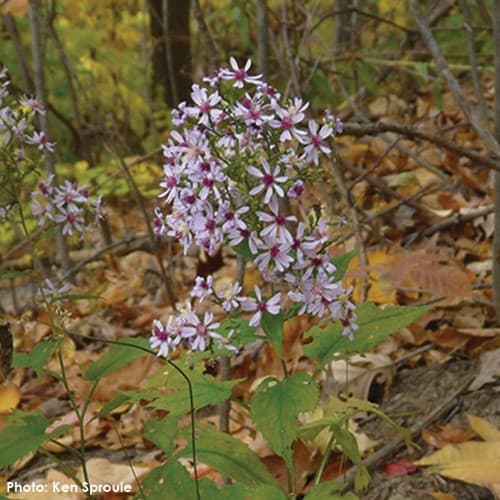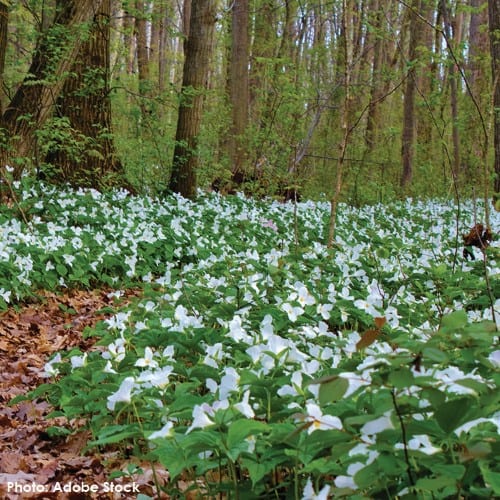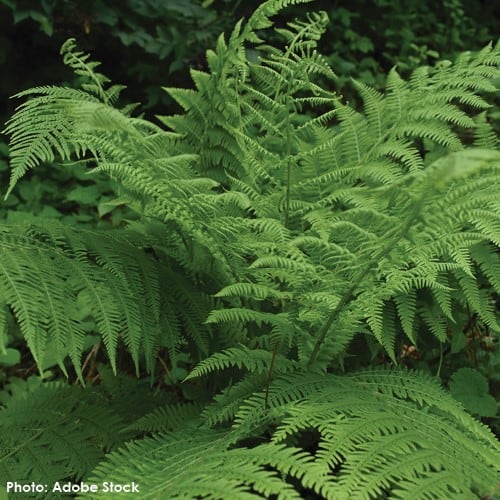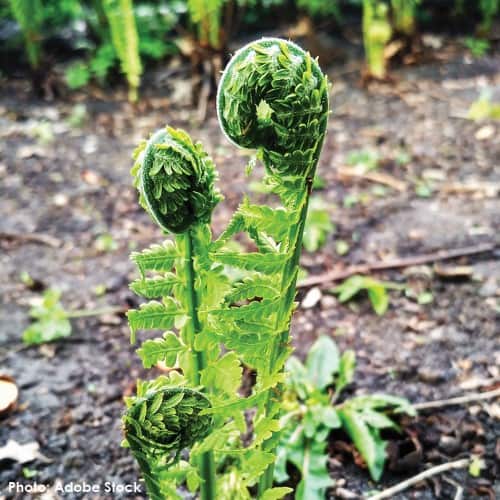Shoreline Garden Plant List
Woodland Slope Plants:
Restored shoreline at Camp Kawartha is thriving
Two large sections of the Camp Kawartha shoreline on Clear Lake have been restored to work in harmony with the lake, through a project partnership initiated by the Environment Council for Clear, Ston(e)y and White Lakes.
The two-year project to revitalize damaged sections of the Camp’s shoreline was completed in August 2020, when more than 20 enthusiastic volunteers gathered to plant an eroded woodland slope just above the shoreline. Members of the lake community, local environmental studies students and other youths planted more than 250 native shrubs, perennial wildflowers, grasses and ferns in the woodland clearing.
Phase one of the project took shape in August 2019 when 30 volunteers converged on what had been an eroded weedy slope around the Camp’s pumphouse. They planted almost 1300 native shrubs and perennial wildflowers in the 20 by 15-metre area.
As the native plants with their strong, spreading root systems mature, they are stabilizing the shoreline slopes and reducing erosion. This helps protect lake water quality by trapping sediment and nutrients in storm water runoff — reducing sedimentation of fish habitat and slowing the growth of invasive aquatic plants and algae.
Plants for the two sections of shoreline were selected to provide shelter and natural food sources for land-based animals, birds, bees and butterflies, and for their attractiveness and resilience to climate change.
The landscape and planting plans were designed by Helen Batten, Basterfield & Associates Landscape Architects. B&A also designed interpretive signage for the two restored areas. Douglas Kennedy, Green Side Up Environmental Services, installed the planting beds, paths and erosion control features and oversaw the planting.
Camp staff also pitched in, raising significant donations for the project, and helping with site prep, planting days and ongoing care of the site. The revitalized areas are now part of the Camp’s outdoor environmental education programs for kids.
Through presentations and guided tours, the Environment Council is using the restored areas to show lake residents the benefits of natural shorelines and how to get started on making their own waterfronts healthier.
Camp Kawartha and Environment Council send a big thank you to their volunteers and the generous donors who made this project such a success: The Stony Lake Heritage Foundation, the Ontario Wildlife Foundation, Basterfield & Associates Landscape Architects Inc., Carol and Ralph Ingleton and the Community Foundation of Greater Peterborough, the Arscott Family Foundation, Ann and Ross Dobbin, and Penny and Robert Little.
For images of the plants used, scroll down.
Open Slope Plants: Deciduous Shrubs
Buttonbush – Cephalanthus occidentalis
Drawing # L3
Description / Benefits / Uses
General Description:
Common in wetlands, streambanks with moist soils, but will grow in other habitats if planted. It can grow up to three metres in height. It produces tiny white flowers in a globular cluster in the summer, followed by dark seeds in the fall.
Benefits for Shoreline:
A swamp / marsh shrub that likes to grow where there is water all or most of the year.
Benefits for Wildlife:
Butterflies and insects find nectar irresistible. The nutlike seeds are eaten by many waterfowl. Many types of birds use as a nesting site.
Traditional uses:
Roots and bark thought to be a diuretic, astringent, and promote sweating. Leaf / bitter bark tea once used for fevers, coughs, kidney stones, malaria, palsy, pleurisy and toothaches.
Red Osier Dogwood – Cornus sericea (Cornus stolonifera)
Drawing # L3
Description / Benefits / Uses
General Description:
This easy to grow shrub with its distinctive red bark adds colour to shorelines year-round. It prefers wet areas and damp woodland openings where it can get full sun. Reaching from one to three metres in height, it will grow back quickly if chewed by wildlife. It produces clusters of white flowers in early summer, followed by green berries that turn blue-white as they ripen in fall.
Benefits for Shoreline:
Deep roots for effective erosion control, well adapted to grow along wet waterfronts and stream banks.
Benefits for Wildlife:
Attracts butterflies, Provides food and cover for waterfowl.
Traditional uses:
Indigenous peoples used the beautiful, pliable red branches to make baskets.
Sweet Gale – Myrica gale
Drawing # L3
Description / Benefits / Uses
General Description:
Aromatic leaves when rubbed, greyish-green, with prominent resin-dots underneath. Grows at edge of water. Grows between two and six feet in height. Flowers form in clusters at end of previous year’s branchlets, fruit with wing-like bracts (July – Aug).
Benefits for Shoreline:
Takes nitrogen from the atmosphere and locks it into soils as a natural fertilizer (may inhibit seed germination of competing species). It prefers damp soil on the edges of water, swamps, bogs, etc.
Traditional uses:
A tea can be made from the leaves. Indigenous peoples used leaves as a smudge to repel insects. Leaves stored with berries to prevent spoilage. Once used as medicine for gout, fevers and itching.
Flowering Raspberry – Rubus odoratus
Drawing # L3
Description / Benefits
General Description:
A shrub without thorns, with large maple-like leaves and stems covered with sticky red hairs. With red / pink flowers (June – Sept), growing up to one and a half metres in height. Berries dull red, somewhat flattened, cup-shaped (July – Sept).
Benefits for Wildlife:
Berries tart and dry but quite edible, providing food for wildlife. Bees and other pollinators love this plant.
Narrow-Leaved Meadowsweet – Spirea alba
Drawing # L3
Description / Benefits
General Description:
A common native shrub of damp places. Grows up to four feet in height. Has beautiful white flower plumes in mid-summer.
Benefits for Shoreline:
This shrub helps control shoreline erosion, an excellent choice for low-growing vegetation along a shoreline.
Nannyberry – Viburnum lentago
Drawing # L3
Description / Benefits / Uses
General Description:
This hardy, adaptable shrub will grow in moist or dry soil, in sun or part-shade. Can grow between ten and fifteen feet in height. Leaves smooth, abruptly long-pointed. Flowers in late spring (May – June) with round topped clusters of creamy-white flowers. Fruit blue-black on slender, reddish often drooping stalks (Aug -Sept).
Benefits for Wildlife:
Large clusters of white blossoms produce sweet, edible berries in September, an excellent food source for migrating birds and small animals. Provides cover and nesting for birds.
Traditional uses:
Indigenous peoples used a tea made from the bark to increase urine flow, Bark of viburnums used to treat Malaria and uterine infections.
Open Slope Plants: Perennials
Anise Hyssop – Agastache foeniculum
Drawing # L3
Description / Benefits / Uses
General Description:
Smooth-stemmed. Leaves strongly anise-scented, oval, toothed shaped with white tint underneath. Bluish flowers in tight whorls (June-Sept). Grows up to 3 feet in height.
Benefits for Shoreline:
Typical habitat dry upland forest, upland areas of prairies, shrubby barrens, and thickets.
Benefits for Wildlife:
Attracts hummingbirds, butterflies, bumblebees, honeybees, carpenter bees, and night flying moths.
Traditional uses:
Traditionally used cold leaf tea to strengthen a weak heart, for chest pains due to cough, colds, fevers and steams baths to induce sweating.
Pearly Everlasting – Anaphalis margaritacea
Drawing # L3
Description / Benefits
General Description:
Can grow up to one metre in height and can spread equally as wide. The clusters of white flowers have yellow centres and bloom for many weeks from mid-summer through to early fall. Easy to take care of in full sun.
Benefits for Shoreline:
Extremely Drought tolerant, may repel some insects that gardeners may consider bothersome.
Benefits for Wildlife:
The American Lady Butterfly uses pearly everlasting as a host plant for its young. The Flowers are magnets for pollinators such as butterflies and bees.
Wild Red Columbine – Aquilegia canadensis
Drawing # L3
Description / Benefits / Uses
General Description:
Red and yellow nodding flowers divided into three-lobed leaflets blooming in April and May. Can grow up to 24 inches in height, spread 12 inches. Grows best in partial shade with rich, well-drained soil, but can grow in full sun and moderately dry soil. Self-seeds easily.
Benefits for Shoreline:
Native environment rocky edges, and wooded rocky slopes.
Benefits for Wildlife:
Source of Nectar for butterflies, moths, bees and hummingbirds.
Traditional uses:
Indigenous peoples chewed roots for headaches, stomach and bowel complaints. Boiled roots and leaves to treat diarrhea. Roots and seeds dried and smoked to make people smell good / incense.
Red Milkweed (Swamp Milkweed) – Asclepias incarnata
Drawing # L3
Description / Benefits / Uses
General Description:
Strongly branched, leaves numerous / opposite (soft, hairy underneath). Sweet scented umbels of rose-pink flowers in bloom in summer (June – Sept). Grows naturally in swamps and wet meadows, but also grows well in gardens. Grows easily in full sun to light shade and average to moist soil. Height between 36 – 60 inches, spread between 24 – 36 inches.
Benefits for Shoreline:
Native environment wetland, stream edge. Thrive in damp places. Essential plant for attracting butterflies.
Benefits for Wildlife:
Host plant to Monarch butterflies’ and some moths’ larvae and caterpillars. Nectar attracts butterflies, moths, hummingbirds, pollinators and beneficial insects. Repels deer and rabbits.
Traditional uses:
Indigenous peoples used root tea as a bath to strengthen weak children. Fibres from stem used as cordage to sew moccasins.
Common Milkweed – Asclepias syriaca
Drawing # L3
Description / Benefits / Uses
General Description:
Large round heads of pinkish-purple fragrant flowers held at tips of stems (stems usually solitary). Large seed pods form in late summer and disperse fluffy seeds that float in the air in the fall. Spreads prolifically from seed and rhizomes. Height between 36 – 60 inches, spread between 24 – 36 inches.
Benefits for Shoreline:
Essential plant for attracting butterflies.
Benefits for Wildlife:
Larval host plant for monarch butterfly. Generate incredible insect activity.
Traditional uses:
Root infusion used as a laxative, to treat venereal disease, and mastitis. Latex from stems applied to moles and ringworm. Silky seed tassels used in pillows / feather beds. Silk used for thread, netting, tapes, and socks.
Butterflyweed (Butteryfly Milkweed) – Asclepias tuberosa
Drawing # L3
Description / Benefits
General Description:
Brilliant orange blossoms in June through July. Grow in full sun in well-drained soil. Grows between 18 – 24 inches in height, and 18 – 24 inches wide. Plants have deep roots and are slow to emerge in the spring. Foliage becomes bare from caterpillar feeding.
Benefits for Shoreline:
Essential plant for attracting butterflies.
Benefits for Wildlife:
Host plant to Monarch butterflies’ and some moths’ larvae and caterpillars. Nectar attracts butterflies, moths, hummingbirds, pollinators and beneficial insects. Repels deer and rabbits.
Purple Coneflower – Echinacea purpurea
Drawing # L3
Description / Benefits / Uses
General Description:
Showy, pinkish-purple petals hang down from a central disk (bristle tips of flower disks orange) blooms throughout late July and August. Grows up to 3 – 4 feet in height. Leaves oval, coarsely toothed. Drought tolerant. Prefers full sun.
Benefits for Wildlife:
Gold finches eat the seeds as fast as they ripen. Provides food overwinter for birds like juncos, finches and chickadees. A favourite nectar source of many butterflies, and pollinators.
Traditional uses:
Extracts from above ground parts taken orally stimulate immune system activity.
Joe-Pye Weed – Eupatorium maculatum
Drawing # L3
Description / Benefits / Uses
General Description:
Grows between 60 cm and 1.8 metres in height. Stems purple or purple-spotted. Leaves lance shaped in whorls. The Flowers are pinkish-purple tubular florets and occur in flat-topped clusters between 10 – 14 cm wide (July – Sept). Can be aggressive.
Benefits for Shoreline:
Native environment meadows, shorelines and damp thickets. Has the ability to stabilize stream banks.
Benefits for Wildlife:
This plant feed several species of butterfly including: orange sulphur, pearl crescent, painted lady, giant swallowtail, tiger swallowtail, variegated fritillary, red admiral.
Traditional uses:
Traditionally used tea from the whole herb for painful urination, gout, kidney infections and rheumatism. Root tea for fevers, colds, chills, diarrhea.
Dense Blazing Star (Gayfeather) – Liatris spicata
Drawing # L3
Description / Benefits / Uses
General Description:
Considered threatened in Ontario. Flowers usually tightly crowded, spike like arrays; bracts tightly surrounding individual flower heads (July – Oct). Grows generally between 30 – 60 cm in height, grows in wet meadows and swampy areas. Likes full sun but can take partial sun.
Benefits for Shoreline:
Grows well in wet meadows.
Benefits for Wildlife:
Nectar and pollen from these plants are important food sources for pollinators such as butterflies, bees and hummingbirds. Seeds provide food for birds such as gold finches.
Traditional uses:
Traditionally used root tea as a warming stimulant, diuretic, expectorant, to induce sweating and reduce pain in colic, backache, dropsy. Snakebite remedy.
Cardinal Flower – Lobelia cardinalis
Drawing # L3
Description / Benefits / Uses
General Description:
Brilliant red flower spikes flag its presence along stream and pond edges (July – Sept). Leaves oval to lance shaped, toothed. Can grow between 30 – 90 cm in height. Parent plants may be short-lived, so let copious seeds drop to the ground to start new plants.
Benefits for Shoreline:
Plant needs moist soil in full sun to part shade. Grows well in standing water. A spectacular plant once common along waterways.
Benefits for Wildlife:
A favourite source of nectar for hummingbirds. Excellent for attracting butterflies.
Traditional uses:
Traditionally used root tea for stomach troubles, and to expel worms. Leaf teas for headaches, colds, rheumatism.
Wild Bergamot – Monarda fistulosa
Drawing # L3
Description / Benefits / Uses
General Description:
This highly variable plant produces masses of light mauve flowers(narrow, lipped tubes in crowded heads) in July, for a long summer bloom period. Grows 3 – 4 feet in height, 18 – 24 inches wide. Grow in dry to medium-wet, well-drained soil, need good air circulation. Deadhead flowers to prolong summer bloom.
Benefits for Wildlife:
Excellent nectar sources for hummingbirds and butterflies. Host plant of Hermit Sphinx Moth.
Traditional uses:
Leaves used as fragrance among baskets, clothing and personal use. Leaf tea for colds, headaches, stomach problems, restful sleep and diuretic.
Black-Eyed Susan (Brown-Eyed Susan) – Rudbeckia hirta
Drawing # L3
Description / Benefits / Uses
General Description:
This plant grows easily and fast, but is short lived. Will Self-seed after blooming. Has bright yellow flowers, daisy-like with rays around dark brown centres. Grows 30 – 80 cm in height 15 inches wide.
Benefits for Wildlife:
Food for birds, pollinators, small animals. Nectar for butterflies and moths.
Traditional uses:
Traditionally used root tea for worms in children, as well as a wash for sores , snakebites, swelling, ear aches.
Open Slope Plants: Grasses
Sweet Grass – Hierochloe odorata
Drawing # L3
Description / Benefits / Uses
General Description:
Aromatic, cool-season perennial growing 10 – 24 inches in height, spreading about 2 feet by underground rhizomes, can be aggressive.
Benefits for Shoreline:
Aromatic, cool-season perennial growing 10 – 24 inches in height, spreading about 2 feet by underground rhizomes, can be aggressive.
Traditional uses:
For Indigenous peoples in North America sweetgrass is revered as a sacred plant used in prayer, smudging and purifying ceremonies. A healing plant used as medicine for coughs, sore throats, chafing and venereal infections. Also used as materials for weaving baskets, hats, dolls and other crafts.
Woodland Slope Plants: Deciduous Trees
Downy Serviceberry – Amelanchier canadensis (Clump)
Drawing # L5
Description / Benefits / Uses
General Description:
Small tree up to 24 feet. Leaves fine-toothed, oblong, tip rounded. Flowers white in drooping clusters (Mar – June). Fruits black.
Benefits for Shoreline / Woodland:
Largely restricted to wet sites.
Benefits for Wildlife:
Early spring blossoms very important food source for emerging insects; entice beneficial insects such as bees, butterflies. Summer when fruit is ripe is a delicious food source for birds (orioles, thrushes, woodpeckers, waxwings) and animals (squirrels, chipmunks; moose, deer, snowshoe hares browse on leaves and twigs). Host Plant for larvae of tiger butterflies, viceroy, admirals and other butterfly species.
Traditional uses:
Traditionally used berries fresh or dried, can also be cooked as jams. Root tea as tonic for excessive menstrual bleeding, diarrhea, expel worms.
Woodland Slope Plants: Deciduous Shrubs
Red Osier Dogwood – Cornus sericea (Cornus stolonifera)
Drawing # L5
Description / Benefits / Uses
General Description:
This easy to grow shrub with its distinctive red bark adds colour to shorelines year-round. It prefers wet areas and damp woodland openings where it can get full sun. Reaching from one to three metres in height, it will grow back quickly if chewed by wildlife. It produces clusters of white flowers in early summer, followed by green berries that turn blue-white as they ripen in fall.
Benefits for Shoreline / Woodland:
Deep roots for effective erosion control, well adapted to grow along wet waterfronts and stream banks.
Benefits for Wildlife:
Attracts butterflies, Provides food and cover for waterfowl.
Traditional uses:
Indigenous peoples used the beautiful, pliable red branches to make baskets.
Woodland Slope Plants: Grasses
Morning Star Sedge – Carex grayi
Drawing # L5
Description / Benefits / Uses
General Description:
Greenish-yellow to brown seed heads that look like spiked clubs. Fruits remain on plant in winter. Height 60 – 90 cm, spread 45 – 60 cm. Narrow leaves are shiny, upright and usually semi-evergreen. Grows in clumps.
Benefits for Shoreline / Woodland:
Thrives at or near water. Habitat moist to wet deciduous forests, sandy swamps, wet depressions, shaded seeps, wet prairies, marshes and margins of creeks and rivers.
Benefits for Wildlife:
Deer resistant. The unique seeds are a food source for waterfowl and songbirds.
Bottlebrush Grass – Elymus hystrix (Hystrix Patula)
Drawing # L5
Description / Benefits / Uses
General Description:
Height 100 – 150 cm. Bristly-like flower spikes that stick out at right angles to the main stem. Grows in clumps.
Benefits for Shoreline / Woodland:
Ideal for part shade conditions under deciduous trees.
Benefits for Wildlife:
Attracts butterflies, insects and songbirds. Deer resistant. Caterpillars of Northern Pearly Eye butterfly feed on foliage of bottlebrush grass.
Woodland Slope Plants: Perennials
Wild Leek – Allium tricoccum
Drawing # L5
Description / Benefits / Uses
General Description:
Grows from onion-like bulbs, leaves and bulbs smell like onions. 30 – 45 cm in height. Flower appear on smooth stalks after leaves have died back. Small, hard, shiny seeds atop 6 – 8 feet stalks (persist into winter). Considered a rare plant. Threatened in Quebec and protected by Quebec legislation.
Benefits for Shoreline / Woodland:
Native environment forest, open areas.
Benefits for Wildlife:
Edible bulbs provide food for mammals.
Traditional uses:
Traditionally used warm juices of bulbs for a wide range of effects similar to garlic but less potent (some include: earaches, coughs, croup, shortness of breath, dysentery, gout, rheumatism etc.)
Canada Anemone – Anemone canadensis
Drawing # L5
Description / Benefits / Uses
General Description:
A fast-spreading ground cover for damp or shaded locations. Produces masses of white blossoms each with five petals in June. Basal leaves on long stalks. Leaves deeply divided with 5 – 7 lobes. Grows between 30 – 60cm in height.
Benefits for Shoreline:
Ideal shoreline plant.
Benefits for Wildlife:
Bloom early, attract sweat bees.
Traditional uses:
Traditionally used root or leaf tea for wounds, sores, nosebleeds, as well as eyewash to treat twitching.
Large Yellow Lady’s Slipper – Cypripedium pubescens
Drawing # L5
Description / Benefits / Uses
General Description:
Highly variable, hybridizes with other species. Flowers bright yellow, pouch shaped (May – July), petals behind flowers are green. Leaves broadly lanced-shaped, alternate, hugging stem. Too rare to harvest, on endangered list or federally protected list in the US.
Benefits for Shoreline / Woodland:
Native environment forest, wet areas, moist woods, bogs, fields and open areas.
Benefits for Wildlife:
The showy flowers attract mostly small bees (honeybees, small carpenter bees, mason bees, halictid bees, and andrenid bees), various flies, beetles. White-Tailed deer readily consume foliage.
Traditional uses:
Traditionally used as a sedative for nervous headaches, hysteria, insomnia, irritability, mental depression, and menstrual irregularities.
Wood Aster – Eurybia divaricata (Aster divaricatus)
Drawing # L5
Description / Benefits
General Description:
Considered threatened in Canada, growing only in few populations in Ontario and Quebec. Flower heads have yellow florets (turn purple once pollinated) and white rays (five to ten) arranged in flat-topped clusters, bloom late summer to fall. One simple stem per plant. Require partial shade. Grows between 30 and 90 cm in height.
Benefits for Shoreline / Woodland:
Grows in open deciduous forests typically dominated by Sugar Maple, and American Beech.
Benefits for Wildlife:
Common pollinator species include hoverflies, ants, Common Eastern Bumble Bee, and sweat bees. Attractive to butterflies. Deer will eat the foliage.
Closed Gentian – Gentiana andrewsii
Drawing # L5
Description / Benefits
General Description:
Flowers 2 – 4 cm long, rich blue colour and bottle shaped with closed mouths (Aug – Oct). Flowers clustered at top of plant in axis to top leaves. Stems 30 – 60 cm long. Fruit in a papery wrapping one inch capsule, as fruit ripens many seeds with papery wings are released.
Benefits for Shoreline / Woodland:
Found in flood plain forests, thickets, fens and other swampy areas near water.
Benefits for Wildlife:
Attracts bees: almost exclusively bumblebees who are strong enough to pry open the flowers, and to a lesser extent – those who get in after holes are created- digger bees eastern carpenter bee, honeybee, green sweat bee, eastern masked bee.
Barren Strawberry – Waldsteinia fragarioides
Drawing # L5
Description / Benefits / Uses
General Description:
Yellow flowers with five petals, appears early spring. Three-leaved plant, 10 – 30 cm in height. Low-growing, spreading/ carpeting plant. Vulnerable, Rare and Threatened in several states in the US. Spread mainly by Rhizomes.
Benefits for Shoreline / Woodland:
Habitat sandstone or limestone ledges, rocky banks of woodland streams, rocky sides of wooded bluffs.
Benefits for Wildlife:
The berries are popular with small mammals, birds, ants, and insects.
Traditional uses:
Indigenous peoples used a compound decoction of the plants as a blood remedy, and apply a poultice of smashed plants for snakebites.
False Solomon’s Seal – Maianthemum racemosum (Smilacina racemosa)
Drawing # L5
Description / Benefits / Uses
General Description:
Grows between 50 – 90 cm in height. Zigzag stem, arched. Leaves oval. White flowers are produced on a 10 – 15 cm panicle, each with six white tepals (May – June). Fruit is green and round, turn red when ripe in late summer.
Benefits for Shoreline:
Native environment woodland.
Benefits for Wildlife:
Various bees, flies and beetles attracted to flowers. The ripe fruits are edible for birds and small mammals (rodents). Deer and other herbivores browse the foliage.
Traditional uses:
Indigenous Peoples used root tea for constipation, rheumatism, stomach tonic. Root smoked and inhaled for insanity, and to quiet a crying child.
Mayapple – Podophyllum peltatum
Drawing # L5
Description / Benefits / Uses
General Description:
Large (20 – 40 cm in diameter) deep cut leaves, umbrella-like. Single white flower under the leave. Single yellow fruit. One of the first plants to come up in the spring. Flowering plants have two large leaves, non-flowering plants have one.
Benefits for Shoreline / Woodland:
Native environment forest.
Benefits for Wildlife:
Ripe fruits (yellow) are edible in small amounts, non-ripe fruits (green) are toxic. Larval host for golden borer moth and may apple borer. Attracts pollinators and small animals. Deer and rabbit resistant.
Traditional uses:
Posalfillin is a drug containing podophyllin that is used to treat the plantar wart.
Bloodroot – Sanguinaria canadensis
Drawing # L5
Description / Benefits / Uses
General Description:
Juice is orange-red. Leaves basal, round-lobed. Flowers white eight to ten petals (Mar – June). Roots thick rhizomes, red within.
Benefits for Shoreline / Woodland:
Native environment forest.
Benefits for Wildlife:
Native bees and flies pollinate bloodroot flowers. Certain native ants carry the bloodroot seeds home, eat the outer layer, the seeds are still viable after ants eat and protected by ant’s nest, providing a fertile place for seeds to germinate.
Traditional uses:
Traditionally used root as appetite stimulant (small doses), and arterial sedative (larger doses). Formerly an ingredient in cough syrups. Root tea for treating asthma, rheumatism, bronchitis, lung ailments, fever. Also used as a dye for baskets. Today it is used as a plaque inhibiting agent in toothpaste and mouthwash.
Heart-Leaved Aster – Symphytotrichum cordifolium (Aster cordifolius)
Drawing # L5
Description / Benefits
General Description:
Flower heads of sky-blue sometimes pale violet (Ray flowers 8 – 15 petals), in a dense rounded panicle. 1.5 cm in diameter. Basal, heart-shaped leaves. Grows between 60 – 90 cm in height.
Benefits for Shoreline / Woodland:
Habitat open woods, thickets and clearings.
Benefits for Wildlife:
Food for birds, pollinators, small animals, small insects. Nectar for butterflies, bees and moths.
White Trillium – Trillium graniflorum
Drawing # L5
Description / Benefits / Uses
General Description:
Large white three-petalled flower above a whorl of three leaves (Apr – Jun), White flowers fade to reddish-pink. The provincial flower of Ontario. Unusually slow growth, sometimes capricious germination rates.
Benefits for Shoreline / Woodland:
Habitat rich woods, deciduous forests, mixed upland forests.
Benefits for Wildlife:
Seeds from fruits dispersed by ants, as ants visit several colonies of the plant, they bring genetically variable seeds back to a single location results in germination of new population with relative high genetic diversity. Favoured food of white-tailed deer.
Traditional uses:
Indigenous peoples used root as anti-rheumatic, tea for menstrual cramps, fevers, asthma, coughs as well as to treat the swelling of the eyes.
Woodland Slope Plants: Ferns
Lady Fern – Athyrium filix-femina
Drawing # L5
Description / Benefits / Uses
General Description:
Scaly lower main stalk, lower two pinnae point downwards, comma-shaped indusia. Height up to one metre. Bright green lacey fronds. Grows in clumps.
Benefits for Wildlife:
Serves as a great shelter / cover for birds and small animals. Rabbit resistant.
Traditional uses:
Traditionally used root tea as a diuretic, to stop breast pains after childbirth.
Ostrich Fern – Matteucia struthiopteris
Drawing # L5
Description / Benefits / Uses
General Description:
Tall fronds unfurl between late April and early May. Large elegant vase-shaped fern. Medium green leaves are slender at their bases and widen dramatically before the tips. Spreads widely with underground runners. Grows between 90 – 120 cm in height.
Benefits for Shoreline / Woodland:
Native environment wetland, stream edge. Help stabilize the soil to prevent erosion.
Benefits for Wildlife:
Serves as a great shelter / cover for birds and small animals. Provide material for nesting birds. Can be larval food for some butterflies and moth species including Sthenopis auratus(Gold-spotted ghost moth).
Traditional uses:
Indigenous peoples used fronds to help with back pain and gynecological issues.

